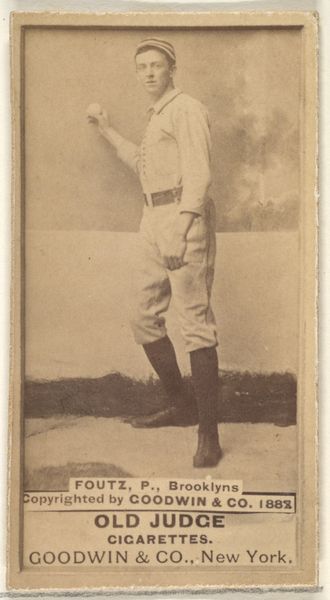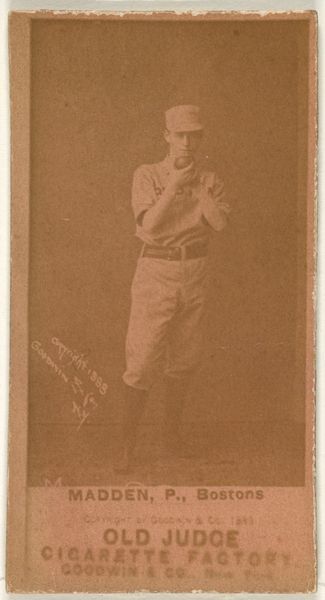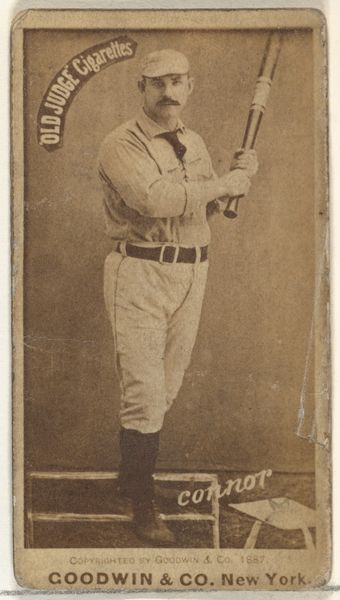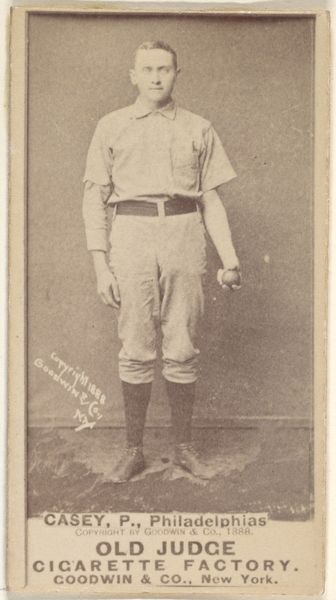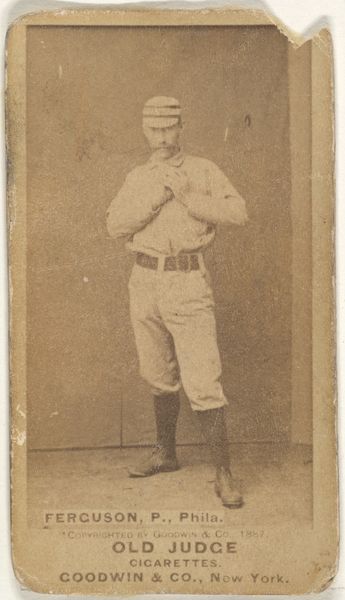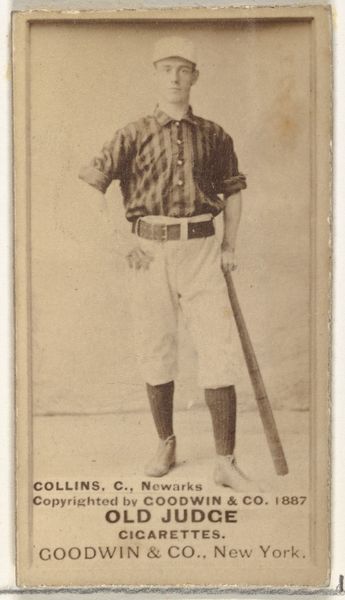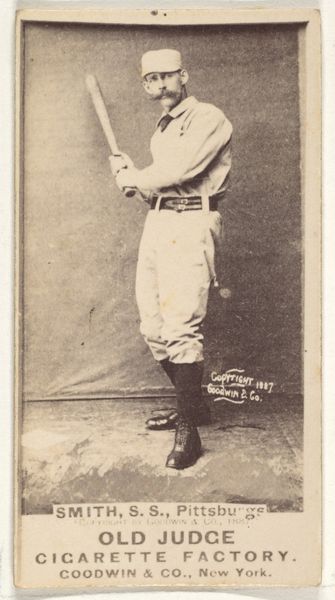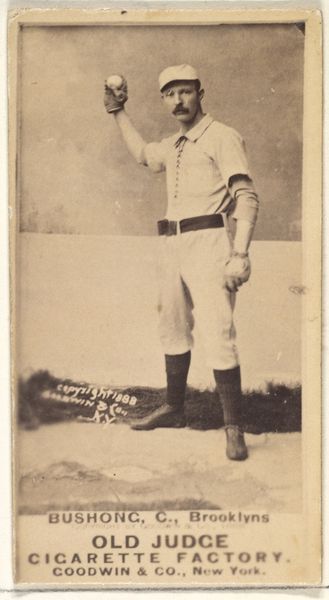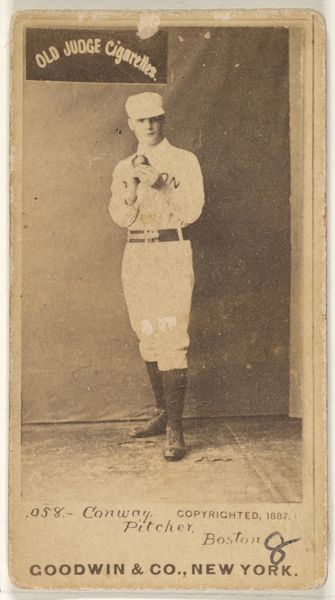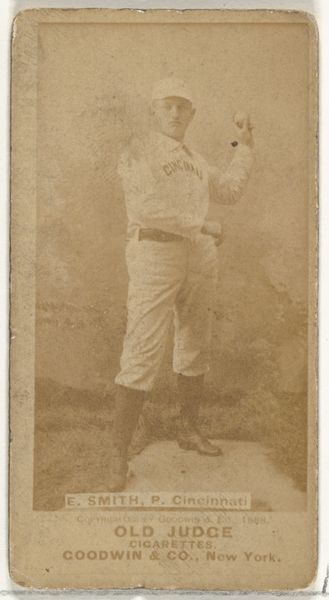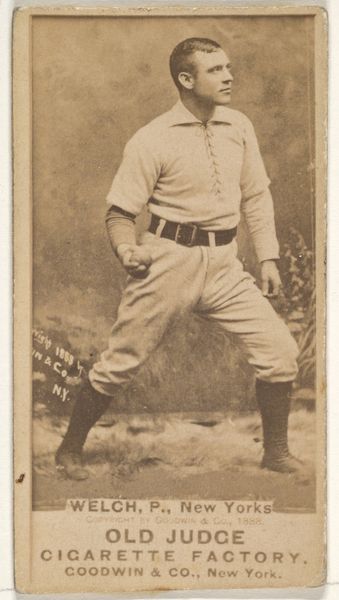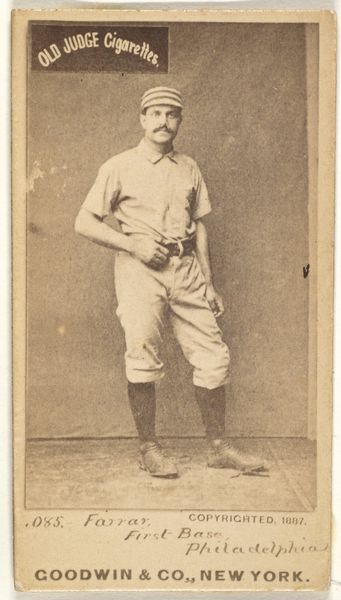
Abner Frank Dalrymple, Left Field, Pittsburgh, from the Old Judge series (N172) for Old Judge Cigarettes 1887
0:00
0:00
drawing, print, photography
#
portrait
#
drawing
# print
#
impressionism
#
baseball
#
photography
#
19th century
#
men
#
athlete
#
realism
Dimensions: sheet: 2 11/16 x 1 3/8 in. (6.9 x 3.5 cm)
Copyright: Public Domain
Editor: This is a baseball card from 1887, titled "Abner Frank Dalrymple, Left Field, Pittsburgh," part of the "Old Judge" series for Old Judge Cigarettes. It's a photograph printed by Goodwin & Company. I find it fascinating how something so seemingly simple captures so much. What can you tell me about this work? Curator: It's more than just a baseball card, it is an artifact deeply embedded in the socio-cultural landscape of its time. These cards, distributed with cigarettes, reveal the nascent commercialization of sports and its intersection with popular culture. It's important to note how these early forms of advertising participated in constructing idealized images of masculinity and athleticism. Does this representation feel authentic, or constructed? Editor: Well, the pose feels deliberate, maybe even a bit staged. It's definitely not a candid shot from a game. Curator: Exactly. Consider the power dynamics at play. We are invited to admire Dalrymple, the athlete, but also to consume Old Judge Cigarettes. The image reinforces dominant societal norms – a strong, virile man associated with a product intended to project similar qualities onto the consumer, mostly men. Think about who was included, and equally important, excluded from this narrative. Were women depicted in similar ways, and if not, what does that tell us? Editor: So it's not just about baseball, but also about marketing, gender roles, and even social class, because, who could afford these cigarettes? Curator: Precisely. By examining the context – the rise of consumer culture, gendered marketing strategies, and the social stratification of the era – we unlock layers of meaning far beyond the surface image of a baseball player. We need to think of representation of the American dream then versus what it looks like now. Editor: That really changes how I see this. It's like peeling back the layers of an onion to get to the core of what it represents. Curator: And that’s why context is so crucial. Understanding the social, political, and economic forces shapes not just the creation of the image, but also its enduring legacy.
Comments
No comments
Be the first to comment and join the conversation on the ultimate creative platform.
